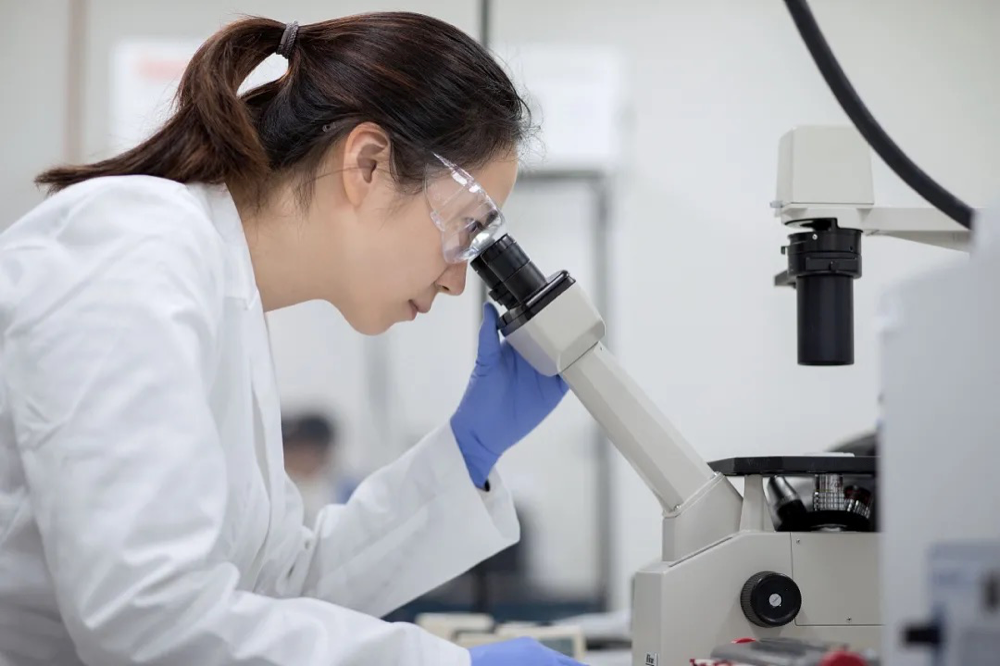On December 2, China’s tobacco regulatory agency publicly solicited opinions on the “Administrative Measures for Electronic Cigarettes (Draft for Comment).” As a result, it shifted the product from a regulatory gray area to national supervision.
The draft rules of the State Tobacco Monopoly Administration were formulated after China’s cabinet revised its tobacco monopoly law last week to include e-cigarettes. This management method will help the quality and management of e-cigarettes to obtain a higher guarantee. In addition, The production and manufacture of e-cigarettes must be licensed by the tobacco authority to operate.
This has also played a specific role in the safety supervision of e-cigarette exports, helping to control and improve the quality of e-cigarettes. So, how to interpret the relevant information of this opinion draft! Xing Chenyue, the inventor of the Chinese nicotine salt patent, Ph.D. in chemical engineering from the University of California, and the chief scientist of Xiwu(Myst Labs), gave a very comprehensive analysis:

1. Nicotine in tobacco should be used, with a purity of not less than 99%
Nicotine is what we call nicotine. At present, there are two sources of nicotine, namely extraction from tobacco leaves (or other plants) and chemical synthesis. To put it simply, the extraction of nicotine uses chemical solvents to extract the nicotine that already exists in the tobacco leaves and then separate and purify them; the synthesis method mainly uses other non-nicotine raw materials for chemical synthesis without the need for tobacco leaves.
At present, only a few domestic companies have the technology to synthesize nicotine on a large scale, and the nicotine in the e-cigarettes sold comes from tobacco extraction. However, from the chemical analysis and testing of the final nicotine product, as long as the purity reaches more than 99%, which route is obtained from the production, the difference in subsequent e-cigarette products will be negligible.
The new national standard stipulates that the source of nicotine is the extraction method, and the tobacco raw materials required for the extraction method are subject to strict control, which is consistent with the core idea of ”e-cigarettes are regulated concerning traditional tobacco” in the State Council decree issued a few days ago. This regulation has a positive impact on consumers because it has unified requirements for the primary raw materials of new tobacco. Still, it may become a “stuck neck” problem for new tobacco companies, and it will increase the supply chain and production cost control requirements of the company. , Upstream supply chain management and production quality assurance system will become one of the core competitiveness of new tobacco companies in the future. As a result, synthetic nicotine e-liquid may be exported more in the future.
2. The use of benzoate, tartrate, lactate, levulinate, malate, and citrate of nicotine is allowed
Nicotine salt is the general name of the salt formed by the combination of nicotine and different acids. All the salts shown in the national standard indicate the acid source that can be used in e-liquid that combines with nicotine to form a salt. Due to these acids’ different nature and spatial structure, their ability to integrate with nicotine during the atomization process brings a different inhalation experience.
As a new type of tobacco company, finding the appropriate acid within the scope allowed by the national standard and the corresponding ratio is also very critical to the product experience.
3. Other tobacco extracts should meet the requirements of tobacco flavors
Tobacco flavors refer to flavors formulated with two or more flavors and other ingredients used to enhance the style of tobacco products or improve the quality of tobacco. The national standard has a series of quality control indicators and test methods for tobacco flavors. This regulation first clarifies that tobacco extracts can be used in e-cigarettes, which provides more possibilities for e-cigarettes to benchmark the original taste of tobacco.
4. Atomizer additives should not make the product present a characteristic flavor that is inducible to minors
This article puts forward one of the main requirements for the development of e-liquid technology: to eliminate multiple flavors, let e-cigarettes match the original taste of tobacco, and reduce the characteristics of potential attraction to minors from the perspective of the product itself.
5. The nicotine concentration in the spray should not be higher than 20mg/g, and the total amount of nicotine should not be higher than 200mg. Nicotine release should not be higher than 0.2mg/puff
Nicotine concentration: This regulation corresponds to a nicotine concentration of 2% in e-cigarette products, lower than the nicotine content in most cigarette cartridges on the market but slightly higher than the EU standard of 1.7%. After introducing the national standard, all manufacturers will reduce the nicotine content of the e-liquid sold, which may cause the problem of insufficient anti-addiction. Therefore, achieving the best anti-addiction effect within the prescribed nicotine concentration range will become the core competitiveness of manufacturers.
The total amount of nicotine: The total amount of nicotine in a single cartridge is required to be no more than 200mg. Calculated based on the highest nicotine concentration of 20mg/g, a single cartridge is not more than 200mg of total nicotine. Therefore, a single cartridge cannot contain more than 200/20=10g of e-liquid. According to the general specifications of small closed cigarettes (1-2g smoke oil content), the total amount of nicotine is much lower than the national standard. Therefore, even if some brands plan to launch larger-capacity cartridges, the total amount of nicotine will not exceed the national average.
On the other hand, considering that the pod will be accidentally damaged and hurt the user’s mouth, esophagus, or other skin areas may be passively directly exposed to the e-liquid.
The 200mg total limit can also control the amount of nicotine that the user directly contacts or swallows in a single time nicotine poisoning.
Nicotine release: As e-cigarette e-liquid is heated and atomized into an aerosol for users to inhale, the end product of the e-cigarette is aerosol. The nicotine in the e-cigarette cannot directly correspond to the amount of nicotine inhaled by the standard user. The national standard also regulates the nicotine content in aerosols. For all e-cigarette products, the aerosol generated during the use of the product should be tested following the national average to confirm that the nicotine in the aerosol does not exceed 0.2mg per month in meeting the specified standards. Estimated with the highest nicotine concentration of 20mg/g and the highest possible atomization efficiency of 100%, under the conditions of one puff every 30s and 55mL per puff in the national standard test parameters, it is required that the tested product does not exceed 10mg of atomized e-liquid per puff on average. At present, the middle smoke oil per puff of conventional closed small cigarettes is 3-5mg, so this regulation also limits the possibility of using high-power products to increase nicotine delivery.
6. E-cigarette products should be marked:
- A list of atomized ingredients, arranged in descending order of mass fraction, with a minimum of 0.1%;
- The nicotine concentration and the total amount of nicotine in the mist are expressed in “mg/g” and “mg,” respectively;
- The volume of the e-cigarette liquid or the mass of the solid atomization is expressed in “mL” and “g,” respectively;
- The sign of restricted use of hazardous substances in electrical and electronic products shall comply with SJ/T 11364;
- The health warnings shall comply with the relevant national administrative departments’ relevant regulations.
Further regulations on industry packaging and information disclosure have increased, and industry transparency has increased.
The labeling requirements for the ingredient list meet the needs of the EU TPD.
7. Provision of substances temporarily permitted for the use of nebulizer additives
This table stipulates the list of 122 kinds of mist additives temporarily permitted to use substances and the maximum usage amount and has a precise specification for additives. The safety of the additives in the table has been confirmed at home and abroad and has been widely used in the edible field. These additives can be roughly divided into natural flavors (such as lemon oil, rose oil, and rosemary oil, etc.), synthetic flavors (esters, aldehydes, ketones, etc.), extracts (coffee extract, cocoa extract, etc.). In addition,), acids used to form nicotine salts (as described in 2) and preservatives (potassium sorbate), etc., are the sources of different flavors of e-cigarette products.
The types and dosage regulations in the national standard provide consumers with more diversified products while ensuring the safety of the products. At the same time, it also restricts some irresponsible brands from launching the types and dosage regulations in the national standards provide consumers with more diversified products while ensuring product safety. At the same time, it also restricts some irresponsible brands from launching snacks and flavors at will to prevent them from attracting minors to their preferences. Laid a foundation for the sustainable development of the industry.
8. Interpretation of the test requirements for known harmful substances that may be contained in or produced by fog
The national standard stipulates the determination of the release amount of three aldehydes and diacetyl in e-cigarette emissions (aerosol) and the determination method—these aldehydes and diacetyl cause long-term irreversible diseases (such as cancer, popcorn lung) harmful substances. The national standard regulations put forward requirements for the product quality control of electronic cigarette manufacturers. Not only can not actively add diacetyl as a margarine flavoring agent but also require high standards of product atomization temperature control to prevent overheating E-liquid produces a large amount of aldehydes by-products. After introducing the national average, consumers can be more assured of the quality of the products they buy.
9. When the failure of the battery causes the internal pressure of the electronic cigarette, the pressure relief direction should be opposite to the suction direction, and the suction nozzle should not be damaged or displaced
In some extreme cases, e-cigarette batteries may malfunction, swell, etc. At this time, the personal safety of users needs to be guaranteed. Therefore, the new national standard requires brands to reconsider the placement and assembly of the product’s internal structure when designing electronic cigarettes in the future and set pressure relief holes at the rear away from the suction nozzle.
10. E-cigarettes should have the function of preventing children from starting and the protective function of preventing accidental starting
At present, most e-cigarettes on the market are relatively simple to operate. They can be activated by inhaling directly into their mouths. However, when parents are not paying attention, children may accidentally start e-cigarettes or inhale them by mistake. Therefore, the new national standard requires the cigarette rod to prevent children and the protection function from preventing accidental activation. For example, the operation steps of creating the cigarette rod are set more complicated. The instructions should also add relevant instructions for child protection functions.
Regarding the promulgation of China’s new national standards for e-cigarettes, we believe that it is conducive to the healthy development of the industry and promotes the e-cigarette industry to continuously increase investment in scientific research. Maishou is committed to fulfilling social responsibilities and contributing to the healthy development of the industry. Therefore, encourage partners to engage in the e-cigarette business.



